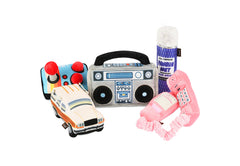Because dogs can't verbally communicate, it may be hard to determine what they're thinking or feeling. However, dogs often exhibit symptoms that can provide insight into their emotions. Here are eight signs that your dog is experiencing anxiety, a common ailment that can affect up to 40% of dogs.
Constant Barking
While barking is a normal response to things like suspicious noises or seeing another dog, constant barking could be a sign that your dog is feeling anxious. Separation anxiety is the most common form of anxiety in dogs, and dogs who experience this type of anxiety will often bark when left alone. To treat separation anxiety, try leaving the radio on at a low volume in your house, as the sound could distract them from barking. You can also try CBD oil for dogs, which can promote relaxation, reduce stress levels and improve sleep quality.
Chewing on Objects
If your dog chews on or destroys household objects, this may be an indication of anxiety. Chewing on items is your dog's way of releasing their nervous energy. You may also find that your dog digs at doors or carpets, which is another telltale sign of anxiety. To allow your dog to release their energy without destroying items in your house, give them a chew toy or bone to gnaw on. As an additional benefit, chew toys can promote hygiene, improve bad breath and provide mental stimulation to your dog.
Excessive Yawning
Contrary to popular belief, yawning might not always indicate tiredness. In fact, excessive yawning could be due to stress and anxiety. You can distinguish between a normal and stressed yawn because the latter is usually more intense and prolonged. In addition, dogs who are feeling anxious often lick and drool excessively.
Hiding
If your dog is confronted with an uncomfortable situation, they'll often hide as a means of escaping. This can include pulling away when they're on a leash, hiding behind their owner or trying to leave the area. To reduce this type of anxious behavior, you can meet with a trainer, who will slowly expose your dog to stressful situations in a safe environment. This gradual reintroduction teaches your dog not to associate these situations with fear, therefore reducing their anxiety.
Trembling or Shaking
This anxiety symptom is easier to recognize, as it's a common behavior in anxious humans as well. Trembling or shaking could be a sign of more severe anxiety, so it's important to recognize this symptom and address it. To reduce trembling or shaking, you can try behavioral therapy, medications or lifestyle changes.
Alert Eyes and Ears
Another common sign that your dog may be feeling stressed are alert eyes and ears. Just like humans, anxious dogs often have dilated pupils or blink quickly. Anxiety causes pupils to increase in size in order to let more light in and allow your dog to see the threat more clearly. You may also find that your dog opens their eyes wide and looks startled. In addition, if your dog turns their ears backwards or flattens them against their head, this could be a sign that they're feeling particularly nervous.
Panting
Although it's normal for your dog to pant after exerting themselves in order to cool down, panting for seemingly no reason is likely an indication of anxiety. You may find that your dog pants in the car or before a visit to the vet, which are common sources of anxiety. To calm your dog down, try giving them soft treats or petting them.
Lowered Tail
If your dog lowers their tail or puts it between their legs, this probably means that they're feeling anxious. Although this may be a more obvious sign of stress, it's still important to acknowledge and address.
It's crucial that you're able to recognize the common signs of anxiety in your dog so you can combat them and make your dog as comfortable as possible. These eight tips can give you some valuable insight into how your dog is feeling.
About the Author:

Mia Morales is a loving wife and mother of twins from Colorado. She is a self-described “DIY addict”, and loves to decorate her house and office with her creations. As a mother, Mia is really passionate about health, nutrition, and what she puts in her body. When she’s not writing, you can find her playing with her little dog and kids. Who says moms aren’t superheroes?






